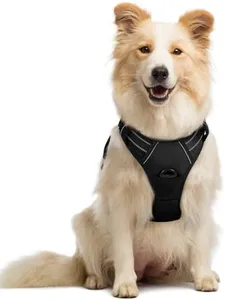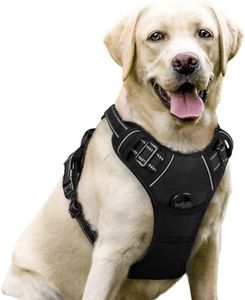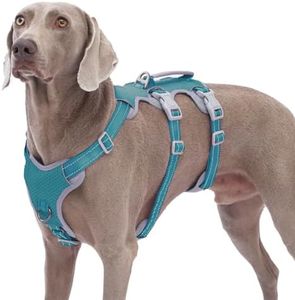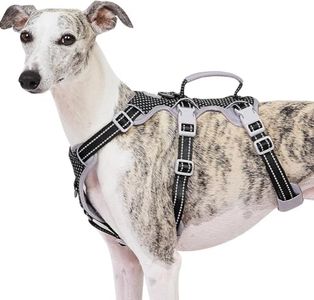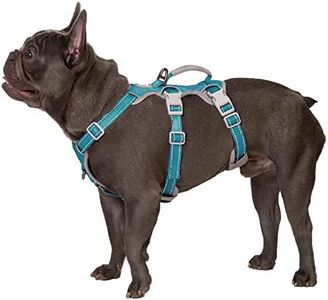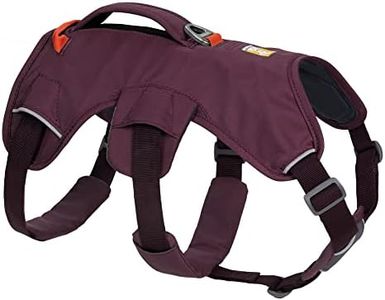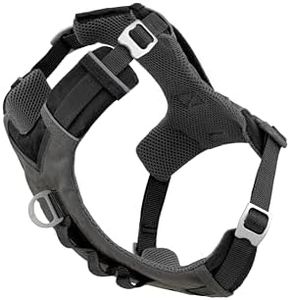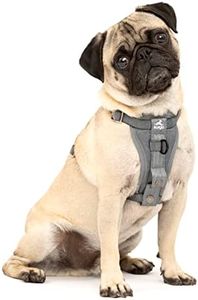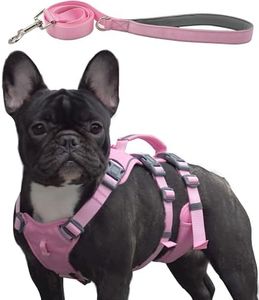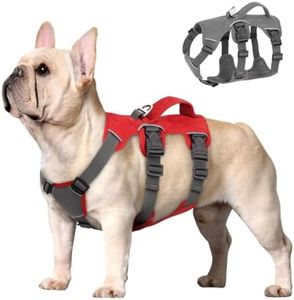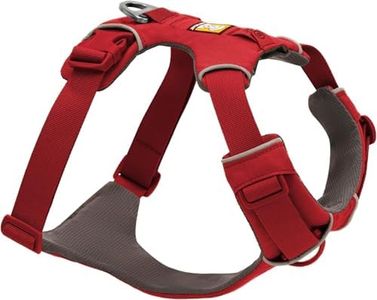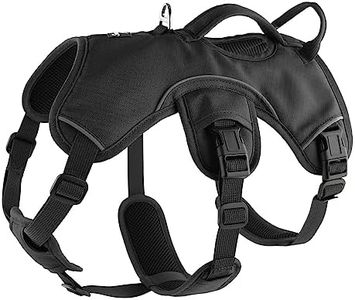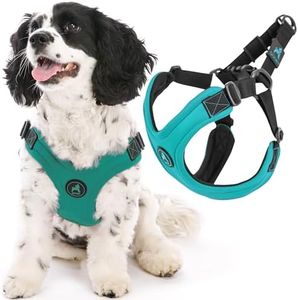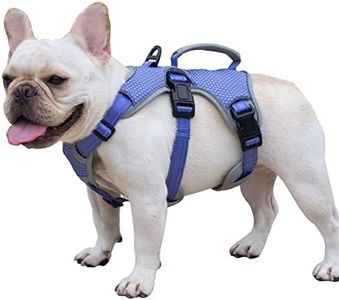We Use CookiesWe use cookies to enhance the security, performance,
functionality and for analytical and promotional activities. By continuing to browse this site you
are agreeing to our privacy policy
10 Best Escape Proof Dog Harness
From leading brands and best sellers available on the web.Buying Guide for the Best Escape Proof Dog Harness
Choosing an escape-proof dog harness is about finding the right balance between security, comfort, and practicality for both you and your dog. Dogs are clever and resourceful, so harnesses must be well designed to prevent slipping or backing out, while still allowing for free movement and comfort. Take time to assess your dog's unique shape, behavior, and activity level, and always make sure to try on harnesses or check size guides carefully to ensure a snug but not restrictive fit.Harness DesignThe design refers to the overall structure and style of the harness, such as step-in, vest, or multi-strap configurations. For escape-prone dogs, designs with multiple secure points (like extra belly straps or dual buckles) can provide added security. Step-in styles are easy for calm dogs, but nervous or flexible dogs may find ways to wriggle out unless the harness fits properly. Look for designs that have more than just two points of contact for the best escape protection.
AdjustabilityAdjustability indicates how much you can change the tightness or fit of the harness. Most harnesses have adjustable straps around the chest, belly, and sometimes neck. The more adjustable points, the better you can customize the fit to your dog's unique shape, which is essential for escape-proofing. Choose a harness that allows adjustment in at least three areas if possible, and make sure it can be snugged up without restricting movement or breathing. If your dog is between sizes or has an unusual body shape, prioritize harnesses with maximum adjustability.
Closure MechanismClosure mechanisms are how the harness stays fastened—these can be buckles, Velcro, or even metal clasps. Secure buckles with locking features are safest for escape artists, as they won't pop open under pressure. Velcro is usually less secure for strong or determined dogs, as it can slowly loosen or be forced open. For extra security, look for harnesses with both a buckle and Velcro or a double-buckle system.
Material and StrengthMaterial refers to what the harness is made from—typically nylon, polyester, or heavy-duty fabric. Durable materials with reinforced stitching hold up better against pulling or chewing. If your dog is strong or likes to bite at their harness, prioritize robust, high-quality materials that won't rip or stretch. For smaller, calmer dogs, lighter materials can be fine, but always check for sturdy construction.
Fit and CoverageFit is how the harness contours to your dog's body, and coverage is how much of their torso is enclosed. Harnesses with more coverage (like vest styles or those with a belly panel) are harder for dogs to back out of, especially for flexible breeds. For agility or athletic dogs, less coverage allows for better movement, but make sure there’s no room to slip out. Always measure your dog carefully and check the manufacturer’s sizing guide, as proper fit is key to escape prevention.
Comfort and PaddingComfort comes from soft padding, smooth seams, and non-restrictive designs. For dogs wearing harnesses a long time, padding helps prevent chafing or irritation, especially around the armpits and chest. If your dog has sensitive skin or will be in the harness for extended outings, prioritize harnesses with extra padding. However, avoid overly bulky models if your dog is small or easily overheats.
